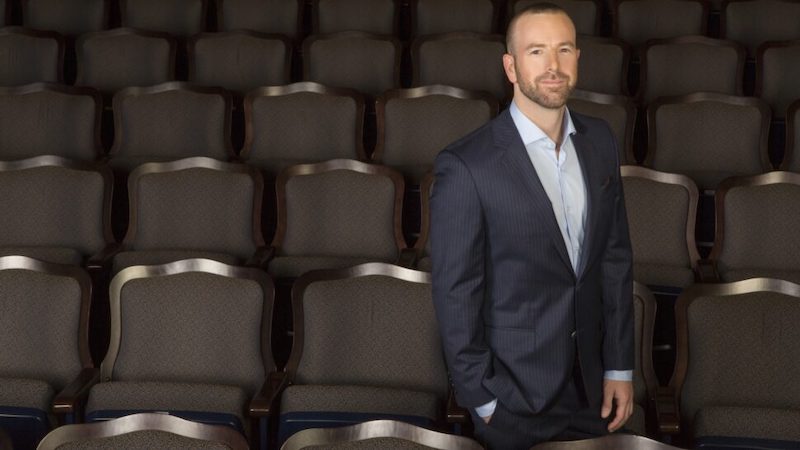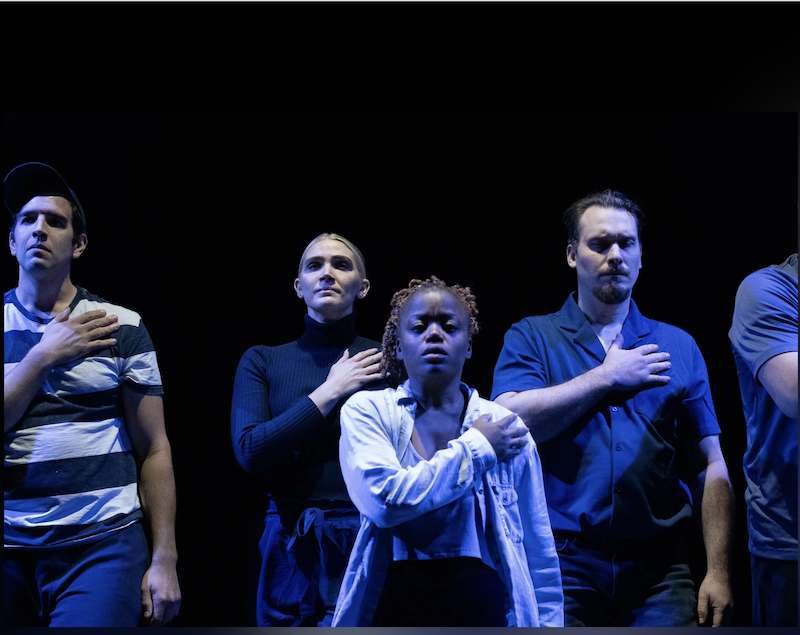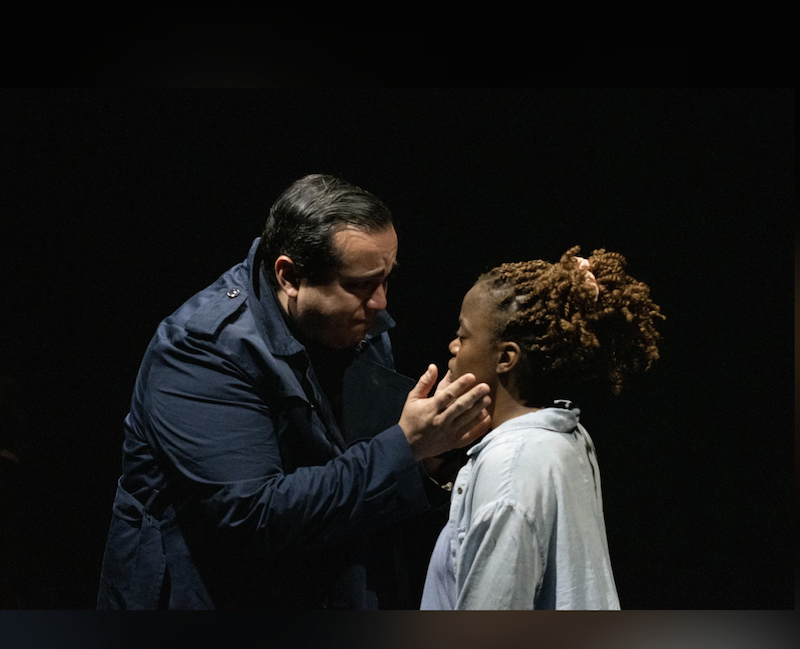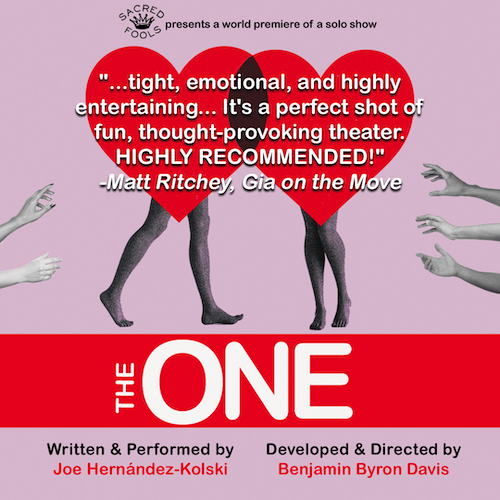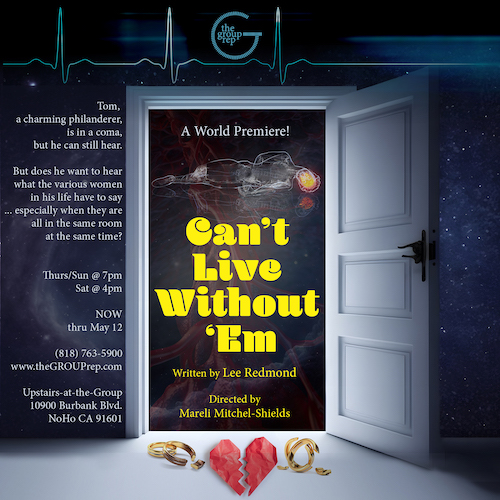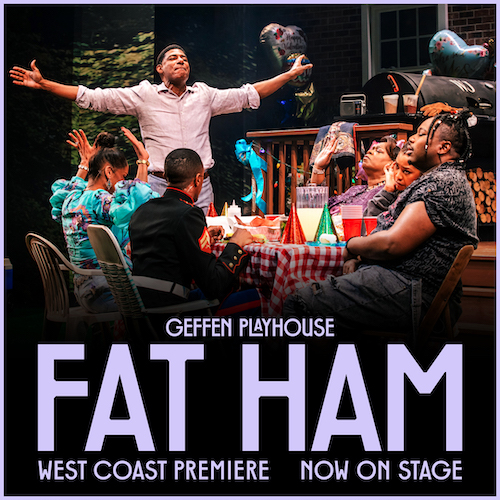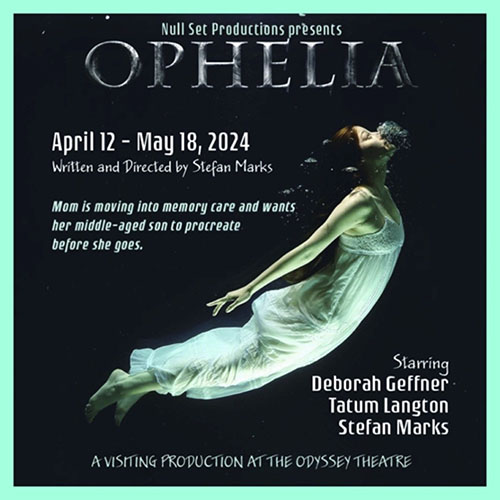Ring in the Old, Ring in the New
By Steven Leigh Morris

Michael Hayden, Sarah Uriarte Berry, in “A Little Night Music” (2023) at the Pasadena Playhouse (Photo by Jeff Lorch)
Danny Feldman, Artistic Director at the Pasadena Playhouse (an institution founded in 1916), describes himself as an optimist. Running a regional theater in 2024, he’d have to be. He admits that theater, local and national, is at an “inflection point.”
Audiences fled during Covid and one third of them have yet to return (according to Stage Raw’s 2023 local audience surveys). Add to this, soaring labor and production costs in venues large and small have caused the number of productions across the region to shrink by 60% since 2013 (again, according to Stage Raw data). Do we have to recite, once more, the litany of theaters across the country that have gone out of business or cut investment programs, such as new play development: Actors’ Theatre of Louisville, Oregon Shakespeare Festival, The Mark Taper Forum (suspending programming), Long Wharf Theatre (lost its space), 12 % staff cuts at Chicago’s Steppenwolf Theatre in 2023, coming on the heels of 19% staff cuts at the New York Public Theater earlier that year, etc., etc., etc.
But with investment and organization, Feldman says, theater can come roaring back.
(He’s not alone in believing this. A cadre of national artistic directors led by the New York Public Theater’s Oskar Eustis has been leading a campaign for federal help to salvage the embattled theater sector.)
Under Feldman’s watch, the Pasadena Playhouse received the 2023 Tony Award for distinguished work by a regional theater, only the second theater organization in the Southern California region to receive that honor. (Costa Mesa’s South Coast Repertory was similarly honored in 1988.)
The larger question, however, is what purpose theater serves, particularly the network of establishment regional theaters, which was invented in the 1950s as a kind of lightning rod to bring the arts into districts outside of big cities as well as within them; to entertain as well as change minds and hearts. Does such a world even exist anymore, where it’s even possible to change minds and hearts, 300 to 1000 people at a time in a theater, for $30 to $100 a pop, not counting parking and, possibly, dining?
The original purpose of America’s regional theaters was to do classics, which Broadway was ignoring in favor of new plays and musicals. Economic forces drove new plays away from Broadway. Premieres by the likes of Eugene O’Neil, Tennessee Williams, Neil Simon, Edward Albee, August Wilson, Tony Kushner, Marsha Norman, and Suzan-Lori Parks were once standard Broadway fare. When this changed, regional theaters — with an impressive sense of purpose — picked up that baton. In fact, South Coast Rep’s 1988 Tony Award focused on that theater’s new play development programs — leading to new plays that would actually appear on its stages before or after crisscrossing the country.
Flash-forward to 2023: “There’s really not much appetite in our audiences for new plays, unless there’s a star attached,” Feldman says. This is disheartening for Feldman, who spent six years running New York’s Labyrinth Theatre and its robust new play program.
He’ll keep doing new plays, he adds, because they’re the soul of the art form. He doesn’t like the term “pipeline . . . They told me to call it an irrigation system,” nurturing theater artists. You water a garden, and it grows. If you’re lucky. If the locusts don’t show up.
Where have all the flowers gone?
Feldman laments the decimation of small theaters in the L.A. area: “In other cities, post-Covid, there is a model of donors supporting small theaters, but because our small theaters were spread so wide and got cut so thin, we haven’t seen what that new world looks like yet. And, this is having a direct impact on the mid-size and large institutions. The eco-system of a healthy Los Angeles theater does require small theaters being strong and robust. I think the reason that we, and the mid-size and larger theaters, are having such difficulty attracting people to plays is that normally the breeding ground for that is the small theaters, and those audiences cross over. We’re sort of cut off at the knees right now.”
It’s old news that we actually had the robust theater scene that Feldman describes. Its decimation was instigated around ten years ago by the actors’ union (Actors’ Equity Association) imposing even more restrictive conditions on where its actors could work. Local theater’s demise was then compounded by a lethal combination of a new state labor law (Assembly Bill 5), which had the effect of doubling and tripling production costs in storefront theaters, and the pandemic, which for some audiences broke the theater-going habit.
The Lure of Musicals
Still, Feldman says, new plays are less expensive to produce than, say, musicals. If only people would come and see them! They certainly show up for musicals.
Pasadena Playhouse dedicated two of its 2023 productions to musicals by Stephen Sondheim: A Little Night Music and Sunday in the Park with George.
You’d think shows like these would offer a road to box-office prosperity for a theater. Think again. Maybe they’d turn a profit at the barn-like Pantages or the Ahmanson theaters. Not in a 686-seat theater like the Pasadena Playhouse. Feldman knew this going in.
“People love the musicals we put on. . . They really drive our audiences. But when we self-produce a musical — not a musical going to Broadway that has enhancement money and all of that — those musicals we’ve recently produced were always budgeted to be our biggest hits, and, at the same time, to operate at a loss. So we cannot, at the Pasadena Playhouse, with very rare exception — and I don’t believe that exception will be around much longer — we cannot produce a musical and have that musical itself make money.
“Now, the good news is, we’re a not-for-profit organization. Our goal is not to do a show just to make money. That’s for our brothers at the Pantages, the commercial theater.”
An Operatic Vision
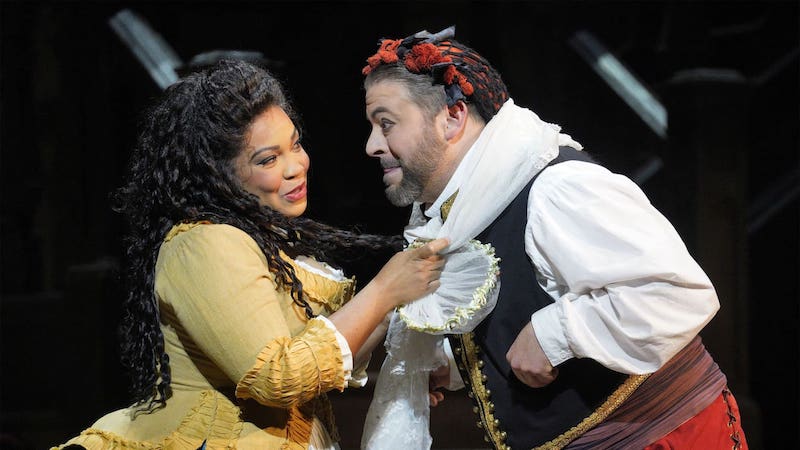
Janai Brugger and Craig Colclough in “The Marriage of Figaro” (2023) at LA Opera (photo courtesy of LA Opera)
There’s one key to the kingdom for his theater at least, Feldman suggests, and that’s to trash the premise that theater needs to earn its keep from box office revenues. “That business model is unsustainable,” he insists. Rather, with planning and organization, theaters need to raise philanthropic money years in advance for the projects that are meaningful for them.
“We took a turn at the Playhouse a couple of years back, [in] that our musicals are very similar to opera or the philharmonic. Those are all subsidized. When you go and see the L.A. Phil at Disney Hall, the concert itself is not paying for that performance. Or opera, for instance. People accept that. To go see opera, it takes philanthropy. It takes support beyond the ticket sales.
“Theater is on the cusp of that, and some of us are over the cusp of that. We are over it with our musicals —though our plays can still turn a profit, if we cared about that, which I don’t.”
Feldman says there’s a reason that it’s not normal to see a musical “in a 600-seat theater with a 22-piece orchestra. It took philanthropy to make that happen, it took all of us at the Playhouse running around for a year saying ‘We want to do something big; If you gave us money last year, we need more this year’ — all built around the notion of a ‘big idea’ [A six-month celebration of Sondheim].”
Add to that a commitment by a number of regional theaters, including Center Theatre Group, to keep ticket prices accessible, and theater without philanthropy is a non-starter.
But the difficulty of attracting audiences to new plays continues to vex Feldman.
“Something is out of sync between us and our audiences, particularly with new plays. I don’t complain about it, I just ask what we can do about it.”
Theater for a New Generation: Bethesda Rep
Something is also out of sync between the theater-makers and the audiences, or potential audiences, of Bethesda Repertory Theater, a company of 11 performers plus administrators, all in their 20s and 30s. Bethesda Rep is a spanking new company founded in 2022, here in Los Angeles.
Explains founding company member Mack Ogden, live theater simply isn’t on the radar of her peers. So (as with Feldman and his Pasadena Playhouse), among Bethesda Rep’s first challenges is to entice audiences to attend live theater in general, and new plays in particular.
“The majority of our generation outside the theater world and the arts, those people haven’t really experienced [the theater], so they don’t know that’s the thing they’re missing,” Ogden says. “How you know if you like banana bread if you’ve never tried it.”
(This speaks head-on to the need for arts programs for youth, particularly in schools, given the overwhelming evidence that people exposed to the arts at a young age become the audiences of the future.)
“The thing they’re missing” refers to a “feeling” of connection that her generation craves that they themselves may not even recognize. “So there is this disconnect,” Ogden adds. “It’s hard to get people in the seats when they don’t know [that] that’s what they’re craving. I’m not saying they’re lazy, but it’s easier to sit in bed and turn on Hulu and call it a day. But I know that when they come, if they come, we’ve seen them transform, the things that we provide are an experience that will hopefully start a conversation and change your outlook, help you move forward.”
This may all imply that Bethesda Rep is playing to empty houses. Not so. In their very short history, they’ve devised one performance The Rhythm of Mourning, a workshop piece created by five writers with input from the performers. It concerns the grief of a young woman mourning the death by suicide of her brother. Presented in September, 2023 for three performances at Stomping Ground LA, a community arts center in East L.A., the event culminated in full houses of people in their 20s, celebrating the performance with standing ovations.
Ironically, the business models for a fledgling company such as Bethesda Rep and a veteran company such as Pasadena Playhouse, are not entirely different. Both companies dedicated considerable time to wooing philanthropists to help sponsor their productions. The difference is one of scale. It cost in the millions to produce two musicals by Stephen Sondheim, each with a 22-piece orchestra. The budget for The Rhythm of Mourning was $15,000, which went to venue rental and tech support, since none of the company members was paid. What came in from pre-performance philanthropy —what Artistic Director Michael William Gomez calls “an act of faith” —was $6000; the show then took in an additional $7,000 at the box office: tickets sales plus further contributions at the door.
“What were you thinking?” I asked, referring to their starting a theater company in 2022, in Los Angeles. “Had you not heard the news?”
They laughed a bit, and winced a bit (“they” also included Founding Company Member Zoë Papia).
These founding company members are from far-flung corners of the U.S. Galindo and Papia hail from Southern California, though Papia studied theater in New York; Gomez is a New Yorker and graduate of New York’s American Academy of Dramatic Arts. Ogden was a ballerina in the “American Southeast,” before gravitating to Chicago and eventually to New York, where she received a theater degree from Columbia University. One point of connection would appear to be the Anthony Meindl Acting Studio in Los Angeles, where many of them trained and met.
Says Gomez, “We were confronted with the limitations of performing in an acting studio just for other performers. I wanted to know how my work would be received by an outside audience.”
The Rhythm of Mourning remains a work-in-progress, Gomez adds. “Maybe we’ll turn it into a musical.” The others stare at him. “Alright, maybe not.”
Edward Albee once said that he wrote a play for the primary purpose of figuring out why he was writing that play. The same could be said of Bethesda Rep, who say that, as they create, they’re trying to grapple with the larger purpose of why they’re creating.
With its myriad productions of revivals, “Theater in Los Angeles is simply too safe,” Gomez says.
Adds Galiando, “I want to see something new, the human condition that isn’t necessarily written about, especially mental health. How is it different, in a market that is saturated? Why would people want to donate to this theater company when they could donate to myriad of mom-and-pop shops?”
Papia homes in what’s missing, and why her generation has such a disinterest in theater work being produced by her elders, and it has to do with a response by the young to the digital age, “especially with [issues of disconnection that lead to crises in] mental health, which is near the top of the list of crises for younger people. “In the arts, we have the ability to look inward and share,” Papia explains. “We don’t have to put on this face, this façade, to share what’s within. I think that’s a big thing in our community of artists, to talk about these things from a stage and make people feel, wow, they really went there fully, no rose-colored glasses. We want to communicate [the pain] that’s really there and be honest and raw with it.”
“So people like me can actually see themselves on the stage,” Galindo adds. “I think there’s a revolution coming in the theater; young audiences crave to see themselves and their experiences. That’s why shows like Euphoria did so well. When they come to see a performance that talks about those things, it’s not only exhilarating — but they feel seen. When you talk about shows like Angels in America or Next to Normal, they were shows of their time because they caught what was going on generationally, and it was like lightning in a bottle, and people said, ‘I see myself, I see my mess.’ That’s what a new generation hasn’t seen in the theater.”
“There’s a beauty to the digital age,” Papia continues. “But I think there’s something, literally, tangible to witnessing another human in real space, a story without a screen, without something blocking you. You can almost taste and feel and experience the story in the same room. I think there’s a benefit to that.”
Ogden reflects on The Rhythm of Mourning and its purpose: “It’s not a true story but it is a true story. Not based on a true story but based on all of our stories, coming together. That’s what the theater is for, isn’t it? Coming together?”


